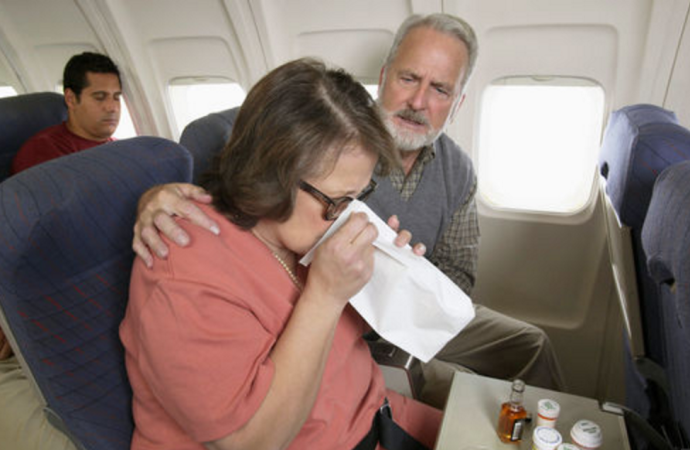Understanding Motion Sickness Motion Sick on Trips, often referred to as travel sickness, is a common condition that affects many individuals during various forms of transportation. It occurs when there is a disconnection between what your eyes perceive and the motion your body feels. This incongruity can lead to symptoms such as nausea, dizziness, sweating,
Understanding Motion Sickness
Motion Sick on Trips, often referred to as travel sickness, is a common condition that affects many individuals during various forms of transportation. It occurs when there is a disconnection between what your eyes perceive and the motion your body feels. This incongruity can lead to symptoms such as nausea, dizziness, sweating, and vomiting, making travel experiences uncomfortable and sometimes unbearable. Explore More About Health (Stress Causes Hiccups)
Identifying Triggers
Understanding the triggers of motion sickness is crucial in preventing and managing its symptoms effectively. Some common triggers include:
1. Visual Stimuli
- Motion Visual stimuli, such as watching fast-moving scenery or constantly shifting landscapes, can confuse the brain and trigger motion sickness.
- Virtual Reality (VR) Engaging in virtual reality experiences, particularly those involving rapid movements or changes in perspective, can induce motion sickness in susceptible individuals.
2. Inner Ear Imbalance
- Semicircular Canals The inner ear’s vestibular system, specifically the semicircular canals responsible for balance, can be disrupted by motion, leading to feelings of nausea and dizziness.
- Fluid Movement Changes in the movement of fluids within the inner ear, caused by motion, can send mixed signals to the brain, exacerbating symptoms of motion sickness.
3. Psychological Factors
- Anxiety Individuals prone to anxiety or stress may experience heightened symptoms of motion sickness due to increased sensitivity to bodily sensations.
- Previous Experiences Negative past experiences with motion sickness can create anticipatory anxiety, making individuals more susceptible to its effects during future travels.

Image by: yendex.com
Effective Strategies for Prevention
Fortunately, several strategies can help prevent motion sickness and alleviate its symptoms, ensuring a smoother and more enjoyable travel experience.
1. Choose the Right Seat
- Front Seat Opt for a seat near the front of the vehicle or mode of transportation, where motion is less pronounced and visibility is clearer, reducing the likelihood of motion sickness.
- Window Seat Sitting by a window allows for better visual reference points and a greater sense of spatial orientation, minimizing disorientation and nausea.
2. Focus on the Horizon
- Visual Fixation Fixating your gaze on a stable, distant object, such as the horizon or a distant landmark, can help recalibrate your brain’s perception of motion and reduce feelings of nausea.
- Avoid Close-up Activities Refrain from engaging in activities that require close-up focus, such as reading or using electronic devices, as this can exacerbate symptoms by further disorienting the senses.
3. Maintain Proper Ventilation
- Fresh Air Ensuring adequate ventilation within the vehicle or transportation environment can help alleviate feelings of nausea and discomfort associated with motion sickness.
- Avoid Strong Odors Steer clear of strong odors or fumes, as these can exacerbate symptoms and increase feelings of queasiness.
4. Stay Hydrated and Avoid Heavy Meals
- Hydration Stay hydrated by drinking plenty of water before and during travel, as dehydration can exacerbate symptoms of motion sickness.
- Light Snacks Opt for light, easily digestible snacks rather than heavy meals before travel to prevent feelings of nausea and discomfort.

Image by: yendex.com
Over-the-Counter Remedies
In addition to preventive measures, several over-the-counter remedies can help alleviate symptoms of motion sickness, providing relief for individuals prone to travel-related discomfort.
1. Antihistamines
- Dimenhydrinate (Dramamine) Antihistamines such as dimenhydrinate are commonly used to prevent and treat symptoms of motion sickness, providing relief from nausea and dizziness.
2. Scopolamine Patches
- Transdermal Patch Scopolamine patches are applied behind the ear and release medication gradually, effectively preventing motion sickness for extended periods, making them ideal for long journeys.
3. Ginger Supplements
- Natural Remedy Ginger supplements or ginger tea can help alleviate symptoms of motion sickness, with studies suggesting its effectiveness in reducing nausea and vomiting.
Comparison Table of Over-the-Counter Remedies
| Remedy | Effectiveness | Method of Administration |
|---|---|---|
| Antihistamines | Effective in relieving nausea and dizziness. | Oral tablets or capsules. |
| Scopolamine Patches | Highly effective for prolonged prevention of motion sickness. | Transdermal patch applied behind the ear. |
| Ginger Supplements | Natural remedy with proven efficacy against nausea and vomiting. | Consumed orally as capsules or brewed as tea. |
Conclusion
While motion sickness can be a challenging aspect of travel for many individuals, understanding its triggers and implementing effective prevention strategies can significantly mitigate its impact. By choosing the right seat, focusing on visual fixation, maintaining proper ventilation, and considering over-the-counter remedies when necessary, travelers can enjoy smoother and more comfortable journeys, free from the discomfort of motion sickness.
Remember, prevention is key, so be proactive in addressing potential triggers and taking steps to ensure a pleasant travel experience. By incorporating these strategies into your travel routine, you can bid farewell to motion sickness and embark on your adventures with confidence and ease.
















